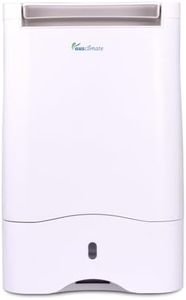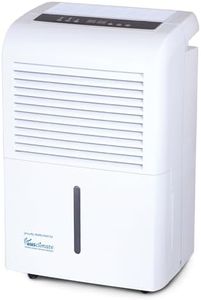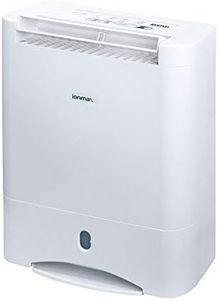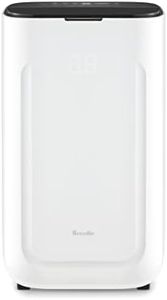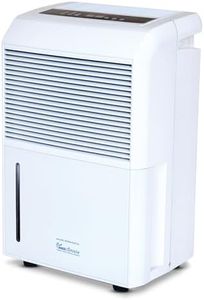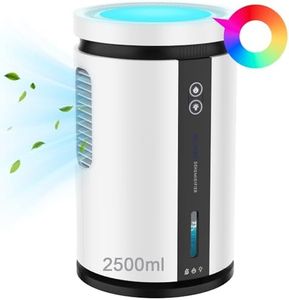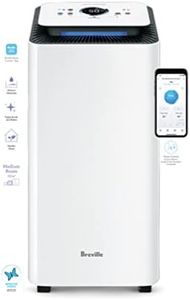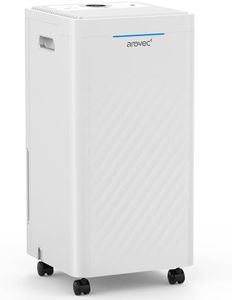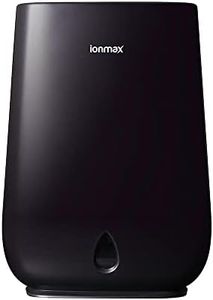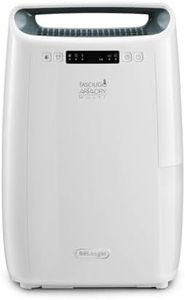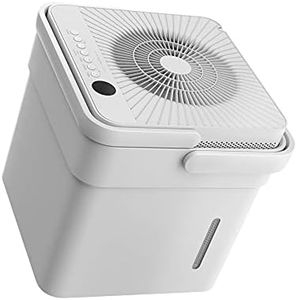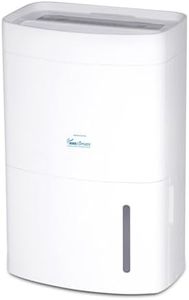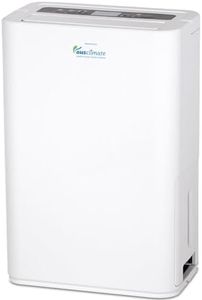We Use CookiesWe use cookies to enhance the security, performance,
functionality and for analytical and promotional activities. By continuing to browse this site you
are agreeing to our privacy policy
10 Best Bathroom Dehumidifiers
From leading brands and best sellers available on the web.Buying Guide for the Best Bathroom Dehumidifiers
Choosing the right bathroom dehumidifier can make a big difference in keeping your bathroom free from mold, musty smells, and excess moisture. Before making a choice, think about the size of your bathroom, how often you use it, and whether you need to move the device between rooms. Picking a dehumidifier that's best suited for your bathroom's needs will help keep both you and your space healthy and comfortable.Moisture Removal CapacityThis spec tells you how much water the dehumidifier can remove from the air in a certain amount of time, usually measured in pints or liters per day. Higher capacity units are able to handle more dampness, so they're useful for bigger or very humid bathrooms. For small to medium bathrooms that just need a bit of moisture removed, a low to moderate capacity (up to 10 pints a day) is often plenty. If your bathroom is large or you often have a lot of steam (like from several showers in a row), look for a higher moisture removal rating. Pick based on how much condensation and wetness you notice after using the bathroom.
Tank SizeTank size tells you how much water the device can hold before you need to empty it. Smaller tanks need frequent emptying, while larger tanks offer longer operation without attention. For bathrooms that don't get very damp, a small tank is usually okay. If you run your dehumidifier for long hours, or your bathroom is especially humid, a larger tank saves you time and effort. Think about how much you're willing to empty the tank versus how long you want the dehumidifier to run on its own.
Dimensions and PortabilityThe size and weight of a dehumidifier matter in tight spaces like bathrooms. Compact and light models are easier to place on countertops or shelves, and are better for smaller bathrooms. Larger dehumidifiers may offer more power but can take up valuable space or be harder to move. Consider where you plan to keep the device and whether you'll need to store it when not in use or move it between rooms.
Noise LevelNoise level shows how loud a machine is when it’s running, measured in decibels (dB). Lower numbers mean quieter operation, which is ideal if you are sensitive to noise or want to run the dehumidifier at night. For most bathrooms, a lower noise level (below 45 dB) ensures it won't be distracting. For guest bathrooms or areas not often used, noise may be less of a concern. Think about when and where you'll use it, and if quietness matters for your comfort.
Automatic ShutoffAutomatic shutoff means the dehumidifier turns itself off when the tank is full. This prevents overflowing and water spills. This feature is especially important if you might forget to empty the tank, or if you want to leave the device running when you're not at home. For small bathrooms and infrequent use, manual shutoff is less trouble, but for busy families or regular operation, automatic shutoff adds convenience and peace of mind.
Energy EfficiencyEnergy efficiency refers to how much power the dehumidifier uses for the amount of moisture it removes. More efficient models use less electricity, saving you money and being better for the environment in the long run. For bathrooms with regular use, a model marked as energy efficient or with a low power rating is a good investment. If you only use your dehumidifier on occasion, this may be less important, but still worth considering for long-term savings.
Drainage OptionsSome dehumidifiers offer a direct drainage feature, letting you connect a hose so the water drains away on its own, while others only rely on the built-in tank. Direct drainage is best if you want to avoid emptying tanks, especially for bathrooms used by several people or in homes with ongoing humidity issues. For occasional use, a tank alone might be sufficient. Consider your bathroom setup and whether you can easily run a drain hose to a sink or drain.
